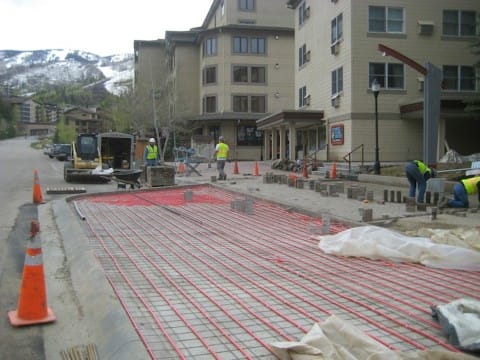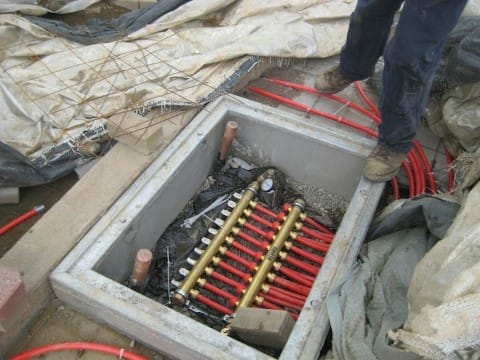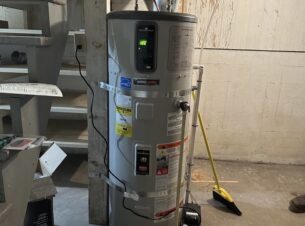On a late winter afternoon in early 2012, a crowd of 3,000 people gathered at the base of the ski area in Steamboat Springs, Colorado, where a “Promenade” had been completed the previous fall. As the sun dropped low and lifts began shutting down, people popped off skis and boards and wandered over to listen to live music pouring from a stage, while others gathered around the fire pits and enjoyed after-ski refreshments. Few visitors were aware that beneath the pavers and concrete underfoot, a sophisticated array of pipes and manifolds melted snow and ice in real time, making the evening’s activities possible.

In 2011, just on time for the fall ski season, workers finished laying 112,000 ft (34,138 m) of 5/8 in. RAUPEX® crosslinked polyethylene (PEXa) pipe under more than 70,000 ft2 (6,503 m2) of walkway area. An additional 3,345 ft (1,020 m) of 1 in. through 4 in. REHAU INSULPEX® energy transfer pipe was installed to deliver heat to the complete system from 43 1 1/4 in. PRO-BALANCE® manifolds. The piping was connected to two separate boiler plants, each with a 12 million Btu capacity.
David Young, president of R&H Mechanical, was keen on incorporating the REHAU system from previous experience with it, and estimated that using RAUPEX and INSULPEX saved him hundreds of hours of labor costs as the mechanical contractor on the Promenade project.
“Anytime you use pre-insulated PEX it’s 100 times easier than using pre-insulated steel,” Young said. Also according to Young, it was the ease of installing REHAU’s fittings that provided the majority of time savings in installation. “We might save 40 minutes to an hour on every fitting,” Young said. “On a project this size, that’s big savings.”
The REHAU snow and ice melting system provides additional energy efficiency and environmental benefits in Steamboat as harsher melting agents and heavy equipment are no longer necessary for clearing snow. It has also helped transform an area once characterized by discontinuous sidewalks and dirty snow.
According to Janet Hruby, assistant director of public works for the city of Steamboat Springs, prior to the snow and ice melting system installation guests were required to navigate through significant snow accumulation to get between hotels and restaurants. “Where there were sidewalks, it was a challenge to keep them plowed from morning until late in the evening,” Hruby said.

It was also challenging to figure out where to put all the snow, according to Jim Schneider, vice president of skier services at property owner Steamboat Ski & Resort Corp. “We’d have to plow and put snow on snow, and that gets dirty, and we sometimes had to haul the snow off,” Schneider said.
Although Steamboat Ski & Resort Corp. is still collecting data on the cost savings of the snow and ice melting system versus manual snow removal, according to Schneider the base area redevelopment project might not have been possible without its installation.
“We added 70,000 ft2. That would have been a lot to maintain, to keep the snow off,” Schneider said. “It might have been a decision point for the development.”




Join the conversation: